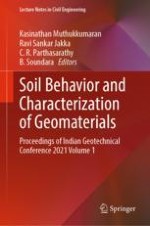2023 | OriginalPaper | Chapter
8. Analysis of Particle Breakage for Blasted Rockfill Material Under Large Size Triaxial Testing
Authors : Uday Bhanu Chakraborty, Sandeep Dhanote, N. P. Honkanadavar
Published in: Soil Behavior and Characterization of Geomaterials
Publisher: Springer Nature Singapore
Activate our intelligent search to find suitable subject content or patents.
Select sections of text to find matching patents with Artificial Intelligence. powered by
Select sections of text to find additional relevant content using AI-assisted search. powered by
